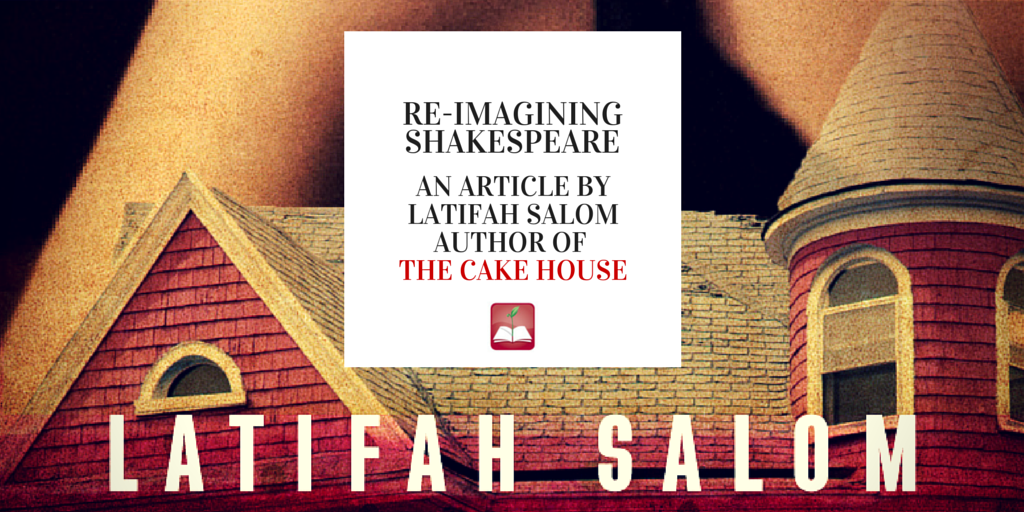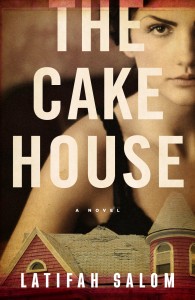Latifah Salom | The Children’s Book Review | March 24, 2015

I recently had a conversation with a friend who relayed a story about taking her young children to see a production of A Midsummer Night’s Dream and how they loved the entire experience. She’d been shocked that they had liked it so much, especially considering the rich language.
Any excellent production of a Shakespeare play can be a powerful experience for a person, whether they are young or old. Midsummer is of course infinitely charming with broad, larger than life characters, and filled with romance, fairies and a fairy queen, and a funny bumbling man running around with a donkey head. And it has my favorite character, Puck. But, whether tragedy or comedy, Shakespeare can transcend time and language and medium and form, and it can reach audiences of all ages.
Shakespeare’s plays are the gift that keeps on giving. They’re powerful. They’re universal. They’re excellent story-telling. When I think of Shakespeare, I immediately think of his many wonderful characters. They resonate so strongly with an emotional truth that anyone can relate to. When re-imaging Shakespeare, or “re-mixing” as the kids like to call it these days, it is important to tap into that well of truth, but to do so in a new and different story. Shakespeare is our toolbox, yet we must face a blank page.
 A re-imaging is not a re-telling. It is not taking Hamlet and plopping the story wholesale into a different setting or a different time period. The first thing I did when I began writing THE CAKE HOUSE was turn by back on Shakespeare. I wanted the flavor of Hamlet but no more. Instead, I wrote the story I wanted to write and let Shakespeare bleed through where it worked best.
A re-imaging is not a re-telling. It is not taking Hamlet and plopping the story wholesale into a different setting or a different time period. The first thing I did when I began writing THE CAKE HOUSE was turn by back on Shakespeare. I wanted the flavor of Hamlet but no more. Instead, I wrote the story I wanted to write and let Shakespeare bleed through where it worked best.
Make your lead characters young, but give them that same emotional truth. Give them the same level of fear and love and hope and romance that exists in the original. Young and older readers will gravitate to the story, so long as that truth is there.
To make re-mixed Shakespeare exciting for young readers as well as older readers, get your hands dirty and have a field day in that Shakespeare toolbox. Become familiar with the source. And by familiar I don’t mean able to recite it by heart. I mean deconstruct it. Take it apart and put it back together again. Examine themes and objectives, character and purpose. And then begin writing.
About the Author

Credit Shannon Keast
Latifah Salom was born in Hollywood, California to parents of Peruvian and Mexican descent. As a teenager she attended the Los Angeles County High School for the Arts, and she holds degrees from Emerson College, Hunter College, and from the University of Southern California’s Masters of Professional Writing program. The Cake House is her first novel. She currently lives in Los Angeles.
LatifahSalom.com | Facebook | Twitter | Tumblr
 The Cake House
The Cake House
By Latifah Salom
Publisher’s Synopsis: Rosaura Douglas’s father shot himself after her mother left him . . . or at least that’s the story everyone is telling. Now her mother has remarried and Rosie is trapped in “The Cake House,” a garish pink edifice in the hills of Los Angeles that’s a far cry from the cramped apartment where she grew up. It’s also the house where her father died—a fact that everyone else who lives there, including her mother, Dahlia, and her mysteriously wealthy stepfather, Claude, want to forget.
Soon, however, her father’s ghost appears, sometimes in a dark window, sometimes in the house’s lush garden, but always with warnings that Claude is not to be trusted. And as the ghost becomes increasingly violent—and the secrets of her family’s past come to light—Rosie must finally face the truth behind the losses and lies that have torn her life apart.
Ages 14+ | Publisher: Vintage | 2015 | ISBN-13: 978-0345806512
Available Here:
Book Giveaway
Enter for a chance to win a copy of The Cake House, by Latifah Salom.
Giveaway ends April 23, 2015, at 11:59 P.M. PST. Enter here.
Discover more novels like The Cake House, by Latifah Salom, by checking out our reviews and articles tagged with Latifah Salom, William Shakespeare, Writing Tips, and YA Books.

1 Comment
We can relate.
My kids loved Shakespeare from an early age…ever since my then five year old daughter got a set of Dover Shakespeare paper dolls. Over the years, we took her and her younger sister to many live productions. When they were in grade school, they acted out the plays using the scripts in Shakespeare: The Animated Tales Gift Volume – “Tempest”, Macbeth”, “Hamlet”, “Twelfth Night”, “Midsummer Night’s…Oct 19, 1992 by William Shakespeare and Leon Garfield (now out of print but sometimes available used on Amazon). And they “got” it. On one occasion, we took our then nine year old and four and a half year old to see an outdoor production of “The Taming of the Shrew” (with a 1960’s setting, Petruchio rode in on a Vespa spewing purple smoke!) Afterwards, the 4.5 yo went up to the actors and said how much she liked it – “so much better than Hamlet since everyone dies in Hamlet.” (Needless to say, the actor was floored!) The next day we went into NYC and saw “Kiss Me Kate” — afterwards at the stage door when our daughter was asked her name by the actor signing her program, she said “Kate — plain Kate or bonny Kate or sometimes Kate the cursed.” The stunned actor looking down on this 3 ft. high kid queried “Kate the cursed?” “Yes,” replied my daughter, “sometimes I have temper tantrums!” (We didn’t coach her — she just saw herself …400 yo Shakespeare still relevant!)